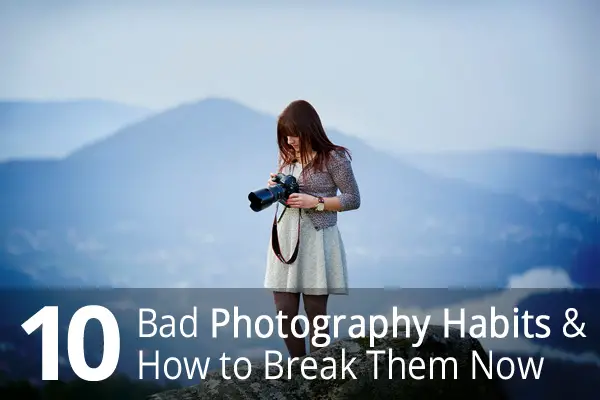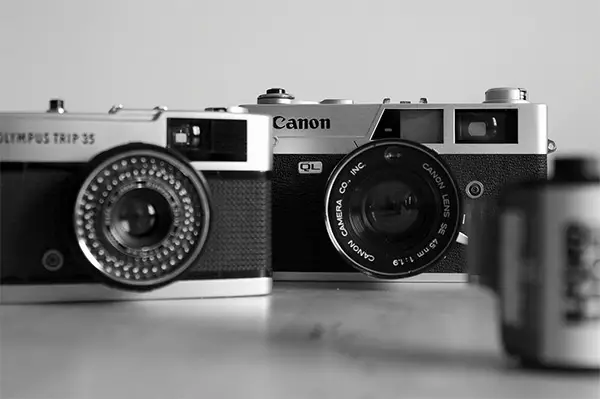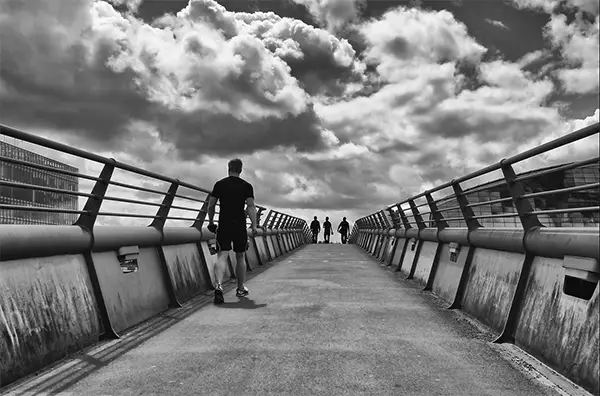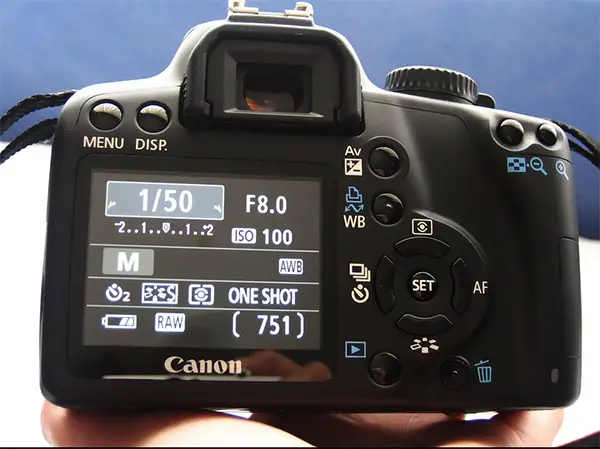There are some very common habits that we develop as photographers. Especially in the beginning when there is so much to learn!

Among the tips and secrets to good photography, a valuable one is to avoid bad habits that will be hard to shake off later. Bad habits are fairly common to create, as we create habits in everything we do. But this guide will help you overcome those habits, and later, you will thank yourself for being so immune to forming bad habits.
1. Not Reading Your Camera’s Manual

We have all done this ! The package finally arrives. In some sort of ritual, you carefully put away somewhere safe the box with all the manuals, receipts and camera goodies. We get it. It’s a sacred thing. Plus, all you really want to do is get your hands on the camera and click, click, click!
That manual even stays in the plastic. It is boring after all, isn’t it? Camera manuals and manuals in general are very dry. We understand how you can see it as hard to get through! But the truth is you never learn as much as when you go through every single thing in your camera’s manual.
Get a highlighter and attack that little book now!
2. Using Only the Same Lens
This is the same as using the wrong lens. It might be comfortable to only carry that 18-200 mm lens. You will be forced to use this lens for everything while your poor 50 mm sits back there in the closet.
Forced by the economy, we sometimes fall into this habit or because carrying a lot of equipment hurts! However, learning to have a good team of lenses can really improve your photography.
Hint: It’s been two years with that “kit lens” now! 🙂
3. Forgetting About Composition

Composition is a vast subject that even has its own rules. A good composition can make an amazing photograph stand out, just by the way you frame the shot.
Read about picture pointers, lines and space. If you already know the famous “rule of thirds,” get to know a couple more rules, and practice them in your everyday shooting!
4. Not Backing up Your Pictures

Preparation is key in photography, and this includes being prepared for the worst! That fantastic photo shoot you just took a couple of days ago might not be safe sitting in the cards next to the computer.
Copy your pictures as soon as possible. Back them up a couple of times and protect yourself with an online backup system.
5. Thinking Post-processing Will Fix Everything
If you are not used to checking your horizon line and tend to spend two minutes in every picture by trying to correct how crooked it is… snap out of it!
You need to create a good habit to make your picture as perfect as possible in your viewfinder.
Check the exposition, the composition, how straight it is…is there any clutter? A good tip is to create a little, mental checklist that you can start using until you do it without noticing. Oh, and after you click, check your LCD. Try again if necessary.
6. Using Only the Auto/Program Mode

Cameras are awesome, sometimes even so awesome that you can snap a perfect picture without touching anything else besides the shutter button.
But photography is not about flukes; it’s an intentional art that you can master with lots of practice!
You might be really good at everything else: composition, post production and even creative ideas. Nevertheless, learning to use all your camera modes and even mastering the manual mode should be your next big “to do.”
Going “manual” means you understand light and can work to get the best out of it, too! (See Point #10)
7. Share All Your Images
Another bad habit that is not directly related to photography is sharing all your pictures without carefully selecting the best.
The key to a good portfolio is displaying only your best pictures. Make sure the photography you choose to display reflects the photography you want to do! Considering your style and your audience should be key to what you choose to put out there.
In the same way, don’t post too many images from the same set or from the same shoot. Variation is also a great quality of a good gallery. The pictures you display should be the ones that you are the most proud of. If you are not sure about a particular picture, keep it on your hard drive, but not in your portfolio .
8. Not Having Enough Batteries or Memory Cards

Memory cards and batteries used to be expensive, but you can find cheaper cards and batteries that work for backup.
Don’t risk your shoot by running out the door with your camera alone. Check to see if you have a memory card and a backup. Check your battery to make sure it has a full charge, and throw another one in your bag.
Not being prepared will be the thing you regret the most when you miss a shot. Make a good habit of always charging your batteries, always cleaning your memory cards and making a mental note every time you go out with your camera to make sure you have everything you need.
Tip: Create the habit to carry a flash, too. You never know when you are going to need some extra light!
9. Never Shooting RAW
If you are not sure how to work with a RAW file, that’s alright! This might be your time to learn about it!
Some photographers know how to shoot in RAW, but they still prefer to shoot in JPG, and who knows? You might end up being one of those. By giving it a chance, you will know if it’s for you.
RAW files are files that aren’t yet processed by your camera and contain more information about the image, which means two things: more post-processing and bigger files. However, the capabilities of fixing blown-out highlights or underexposed images without losing quality is a great reason to start using them.
10. Not Learning About Lighting

Lighting is where every photographer should probably start to learn about photography. However, not all of us do. Some of us jump into shooting and learn more about the creative process. Some learn about posing, and some learn about marketing.
Lighting is the core of photography, and paying attention to the light is key to mastering great pictures every single time.
Try learning as much as you can about good lighting, from natural lighting to shadows and highlights to strobes and light painting. Knowing how to work with light and make the most of it will make the difference between how soon you go from an amateur to an experienced professional photographer.Be Happy to Improve!
What do you think is the habit it took you the longest to correct?
What advice could you share with other photographers (or with a younger you, if you could)?









1 Bad Photography Writing Habit
Thinking that you have something original and important to say, and sharing it with the rest of the world. How to fix it? Read more. Before you publish anything make sure that it has not been published hundreds of times before, most probably much better than you can do it.
Thank you for the input Michal, I read quite a lot ! Would love to read your original, important articles, but unfortunately when I click on your name I can only read hundreds of hateful comments of you around the internet. How to break that habit? Relax 🙂
I did the same thing. He’s a dick – period. Utterly useless.
Man you sure are a hateful little shit.
You really have a problem distinguishing between criticism and hate.
Oh admit it. You hate everyone. That’s easy to see.
Good article for those starting out and looking to improve themselves. Although, shooting with one lens isn’t entirely a bad thing at all. You do limit yourself but you also begin to see and work within that specified focal length & aperture which can greatly improve your compositional skills. Packing light also makes you shoot more often. Productivity makes you a better photog. Only buy lenses that solve a problem that your previous lenses have.
Just read this nice article, being a photography student in Uruguay, we were mostly urged to use the same lens till we got the absolute domain of it, then we were allowed to change it. And believe me, it has prevent right, I started with a simple canon lens 70-300 USM (not is) as I mostly do birding and nature photography, and it has been astonishing that I could even get “macro looks” of course not a real macro pic, with that lens, now I changed it for the Tamron 24-300 ,IS, and the change was wonderful but mainly cause I had tons of hours with the other lens. Now my 50 mm is out with me too , but I don’t use it too often as I might, I confess.
Many things in this article seem obvious, yet, it’s a great thing to remember them all the time. With enthusiasm when taking pics, specially new photog. like me, we do forget to pay attention to silly details as for example the horizon lines!
And Light is the core, as well as reading the manual 🙂
Best wishes to all the photographers around the world.
I find this idea super useful too! 🙂 Thanks for sharing!
Just read this nice article, being a photography student in Uruguay, we were mostly urged to use the same lens till we got the absolute domain of it, then we were allowed to change it. And believe me, it has proved to be the right thing to do. I started with a simple canon lens 70-300 USM (not is) as I mostly do birding and nature photography, and it has been astonishing that I could even get “macro looks” of course not a real macro pic, with that lens, now I changed it for the Tamron 24-300 ,IS, and the change was wonderful but mainly cause I had tons of hours with the other lens. Now my 50 mm is out with me too , but I don’t use it too often as I might, I confess.
Many things in this article seem obvious, yet, it’s a great thing to remember them all the time. With enthusiasm when taking pics, specially new photog. like me, we do forget to pay attention to silly details as for example the horizon lines!
And Light is the core, as well as reading the manual 🙂
Best wishes to all the photographers around the world.
Good lesson! Thanks for sharing and commenting!
Hi Daniela!
You are the first person I read about talking about lenses you were allowed to use while studying photography. It was even more strict when I attended photography college and we were only allowed to use our 50mm during 2 years….. I was ready to explore after that time and was fascinated by any “range lens” out there.
Having said that, I love my 50mm and there are projects I do, where I dedicate the shoot to this lens. What I love about this is that it makes me move and be actively involved rather than “leaning back”, zooming in and out and moving barely.
This lens is a must and great tool to work with to learn framing and approaching or backing off. But obviously it does not work in all situations or at all times, so after all I am glad that I have the freedom to choose.
I love that article, it’s so spot on 🙂 Thanks Laura!